[English] 日本語
 Yorodumi
Yorodumi- PDB-2aki: Normal mode-based flexible fitted coordinates of a translocating ... -
+ Open data
Open data
- Basic information
Basic information
| Entry | Database: PDB / ID: 2aki | ||||||
|---|---|---|---|---|---|---|---|
| Title | Normal mode-based flexible fitted coordinates of a translocating SecYEG protein-conducting channel into the cryo-EM map of a SecYEG-nascent chain-70S ribosome complex from E. coli | ||||||
 Components Components |
| ||||||
 Keywords Keywords | PROTEIN TRANSPORT / Translocation / Transmembrane / Transport | ||||||
| Function / homology |  Function and homology information Function and homology information: / cell envelope Sec protein transport complex / protein transport by the Sec complex / intracellular protein transmembrane transport / protein-transporting ATPase activity / SRP-dependent cotranslational protein targeting to membrane, translocation / signal sequence binding / protein secretion / protein transmembrane transporter activity / membrane => GO:0016020 ...: / cell envelope Sec protein transport complex / protein transport by the Sec complex / intracellular protein transmembrane transport / protein-transporting ATPase activity / SRP-dependent cotranslational protein targeting to membrane, translocation / signal sequence binding / protein secretion / protein transmembrane transporter activity / membrane => GO:0016020 / protein targeting / intracellular protein transport / membrane / plasma membrane Similarity search - Function | ||||||
| Biological species |  | ||||||
| Method | ELECTRON MICROSCOPY / single particle reconstruction / cryo EM / Resolution: 14.9 Å | ||||||
 Authors Authors | Mitra, K. / Schaffitzel, C. / Shaikh, T. / Tama, F. / Jenni, S. / Brooks III, C.L. / Ban, N. / Frank, J. | ||||||
 Citation Citation |  Journal: Nature / Year: 2005 Journal: Nature / Year: 2005Title: Structure of the E. coli protein-conducting channel bound to a translating ribosome. Authors: Kakoli Mitra / Christiane Schaffitzel / Tanvir Shaikh / Florence Tama / Simon Jenni / Charles L Brooks / Nenad Ban / Joachim Frank /  Abstract: Secreted and membrane proteins are translocated across or into cell membranes through a protein-conducting channel (PCC). Here we present a cryo-electron microscopy reconstruction of the Escherichia ...Secreted and membrane proteins are translocated across or into cell membranes through a protein-conducting channel (PCC). Here we present a cryo-electron microscopy reconstruction of the Escherichia coli PCC, SecYEG, complexed with the ribosome and a nascent chain containing a signal anchor. This reconstruction shows a messenger RNA, three transfer RNAs, the nascent chain, and detailed features of both a translocating PCC and a second, non-translocating PCC bound to mRNA hairpins. The translocating PCC forms connections with ribosomal RNA hairpins on two sides and ribosomal proteins at the back, leaving a frontal opening. Normal mode-based flexible fitting of the archaeal SecYEbeta structure into the PCC electron microscopy densities favours a front-to-front arrangement of two SecYEG complexes in the PCC, and supports channel formation by the opening of two linked SecY halves during polypeptide translocation. On the basis of our observation in the translocating PCC of two segregated pores with different degrees of access to bulk lipid, we propose a model for co-translational protein translocation. | ||||||
| History |
|
- Structure visualization
Structure visualization
| Movie |
 Movie viewer Movie viewer |
|---|---|
| Structure viewer | Molecule:  Molmil Molmil Jmol/JSmol Jmol/JSmol |
- Downloads & links
Downloads & links
- Download
Download
| PDBx/mmCIF format |  2aki.cif.gz 2aki.cif.gz | 46.4 KB | Display |  PDBx/mmCIF format PDBx/mmCIF format |
|---|---|---|---|---|
| PDB format |  pdb2aki.ent.gz pdb2aki.ent.gz | 24.8 KB | Display |  PDB format PDB format |
| PDBx/mmJSON format |  2aki.json.gz 2aki.json.gz | Tree view |  PDBx/mmJSON format PDBx/mmJSON format | |
| Others |  Other downloads Other downloads |
-Validation report
| Arichive directory |  https://data.pdbj.org/pub/pdb/validation_reports/ak/2aki https://data.pdbj.org/pub/pdb/validation_reports/ak/2aki ftp://data.pdbj.org/pub/pdb/validation_reports/ak/2aki ftp://data.pdbj.org/pub/pdb/validation_reports/ak/2aki | HTTPS FTP |
|---|
-Related structure data
| Related structure data |  1143MC 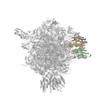 2akhC M: map data used to model this data C: citing same article ( |
|---|---|
| Similar structure data |
- Links
Links
- Assembly
Assembly
| Deposited unit | 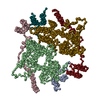
|
|---|---|
| 1 |
|
- Components
Components
| #1: Protein | Mass: 7906.356 Da / Num. of mol.: 2 Source method: isolated from a genetically manipulated source Source: (gene. exp.)   #2: Protein | Mass: 43961.035 Da / Num. of mol.: 2 / Fragment: plug TMH 2a omitted / Mutation: DEL (40-75) Source method: isolated from a genetically manipulated source Source: (gene. exp.)   #3: Protein | Mass: 12095.701 Da / Num. of mol.: 2 Source method: isolated from a genetically manipulated source Source: (gene. exp.)   |
|---|
-Experimental details
-Experiment
| Experiment | Method: ELECTRON MICROSCOPY |
|---|---|
| EM experiment | Aggregation state: PARTICLE / 3D reconstruction method: single particle reconstruction |
- Sample preparation
Sample preparation
| Component |
| |||||||||||||||||||||||||
|---|---|---|---|---|---|---|---|---|---|---|---|---|---|---|---|---|---|---|---|---|---|---|---|---|---|---|
| Specimen | Embedding applied: NO / Shadowing applied: NO / Staining applied: NO / Vitrification applied: YES | |||||||||||||||||||||||||
| Vitrification | Instrument: HOMEMADE PLUNGER / Cryogen name: ETHANE |
- Electron microscopy imaging
Electron microscopy imaging
| Experimental equipment |  Model: Tecnai F30 / Image courtesy: FEI Company |
|---|---|
| Microscopy | Model: FEI TECNAI F30 / Date: Mar 9, 2004 |
| Electron gun | Electron source:  FIELD EMISSION GUN / Accelerating voltage: 300 kV / Illumination mode: FLOOD BEAM FIELD EMISSION GUN / Accelerating voltage: 300 kV / Illumination mode: FLOOD BEAM |
| Electron lens | Mode: BRIGHT FIELD / Nominal magnification: 39000 X / Calibrated magnification: 39000 X / Nominal defocus max: 4300 nm / Nominal defocus min: 1500 nm / Cs: 2.26 mm |
| Specimen holder | Specimen holder model: OTHER / Specimen holder type: Cryo Stage / Temperature: 93 K |
| Image recording | Electron dose: 11 e/Å2 / Film or detector model: KODAK SO-163 FILM |
| Radiation | Protocol: SINGLE WAVELENGTH / Monochromatic (M) / Laue (L): M / Scattering type: x-ray |
| Radiation wavelength | Relative weight: 1 |
- Processing
Processing
| EM software |
| ||||||||||||
|---|---|---|---|---|---|---|---|---|---|---|---|---|---|
| CTF correction | Details: defocus groups | ||||||||||||
| Symmetry | Point symmetry: C1 (asymmetric) | ||||||||||||
| 3D reconstruction | Resolution: 14.9 Å / Resolution method: FSC 0.5 CUT-OFF / Num. of particles: 53325 / Details: The resolution is based on FSC at 0.5 cut-off / Symmetry type: POINT | ||||||||||||
| Atomic model building | Protocol: FLEXIBLE FIT / Space: REAL / Target criteria: correlation coefficient, R-factor Details: METHOD--normal mode-based flexible fitting REFINEMENT PROTOCOL--normal mode-based flexible fitting, real space refinement | ||||||||||||
| Refinement step | Cycle: LAST
|
 Movie
Movie Controller
Controller



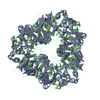
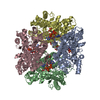

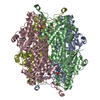
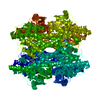
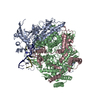
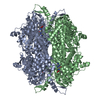
 PDBj
PDBj

